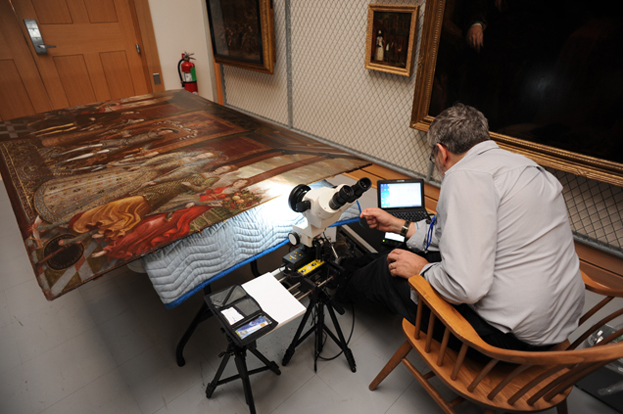
A closer look at the painting’s structure. Until now the technical examination of these portraits has focused on the surface of the panels, but much can be learned about their history by studying the wood panels upon which they are painted. Certain characteristics, such as tool marks and notches in the wood where nails held the painting in a frame, reveal clues about the panel’s construction and history. Dendrochronology is a more specialized technique that is used to identify when and where the oak panels were sourced.

Dendrochronology is used to identify the date and source of oak panels through the study of their tree rings. A tree adds a layer of wood to its trunk and branches each year, resulting in annual rings, which appear as dark lines to the naked eye and as clusters of tiny holes under magnification.
The rings correspond to the tree’s growing cycle. Trees have the most growth in spring, when moisture is plentiful, and the first cells produced are large. These cells are the tiny hole clusters visible under magnification. As the seasons progress, the size of the growth cells decreases, until the autumn, when growth ceases. The contrast between the large cells produced in spring and the tiny ones produced in other seasons forms tree rings that are visible for counting.